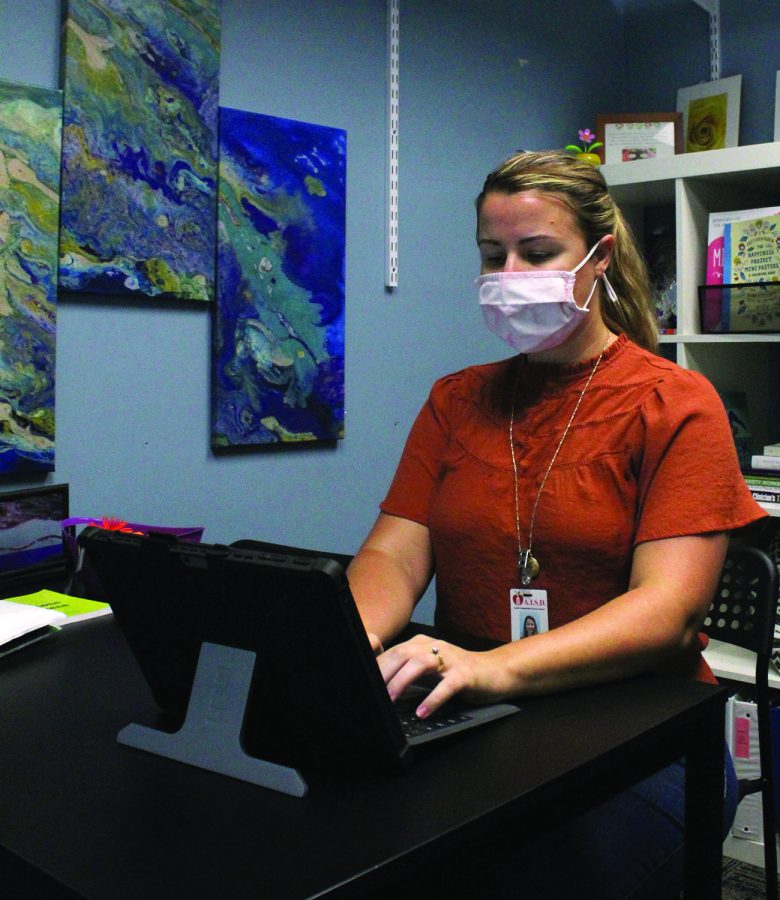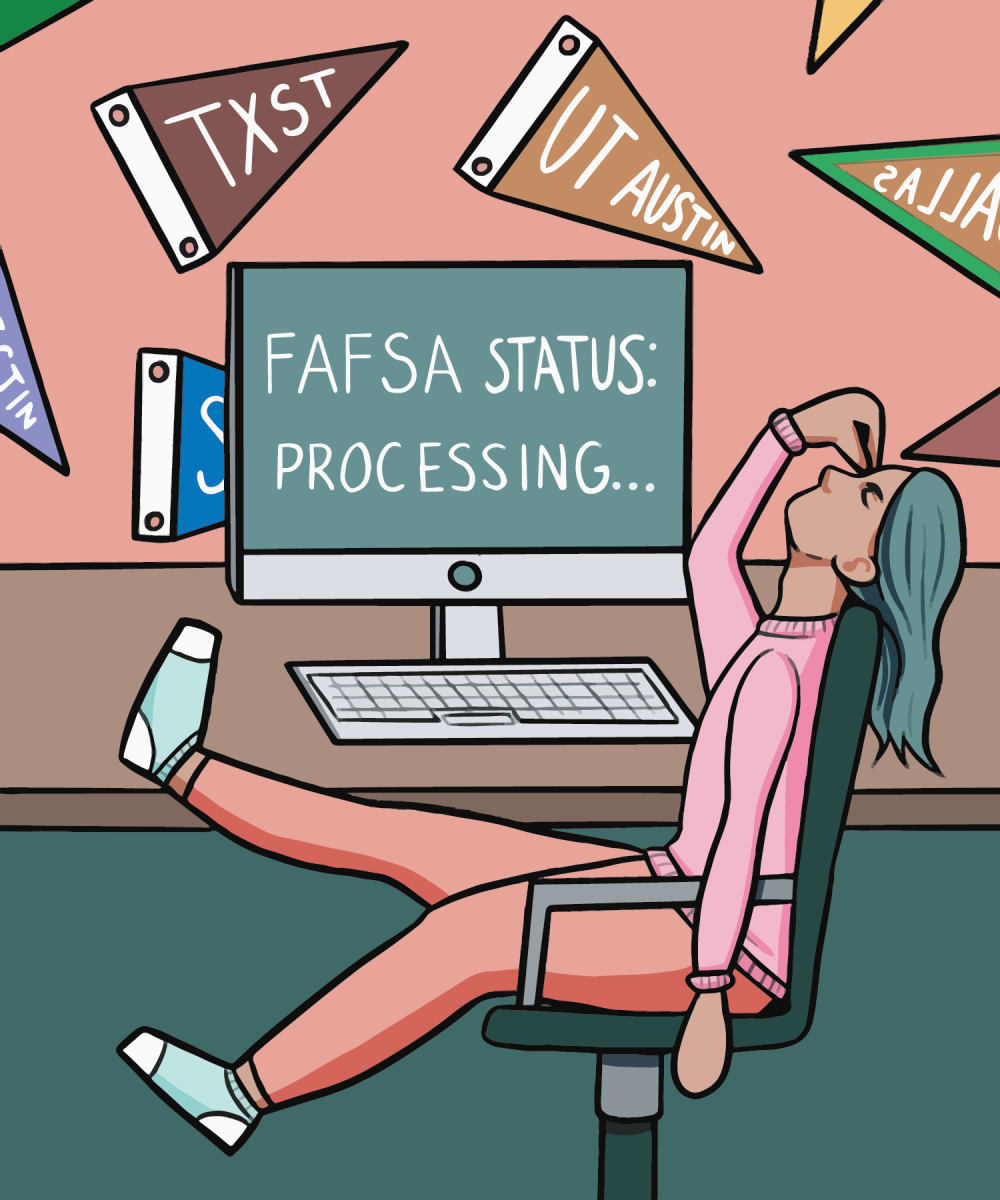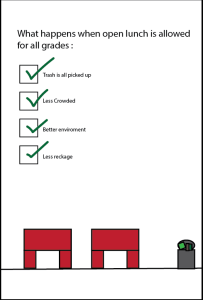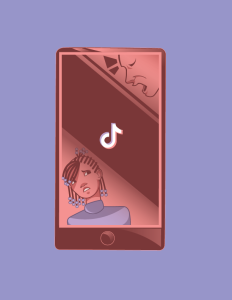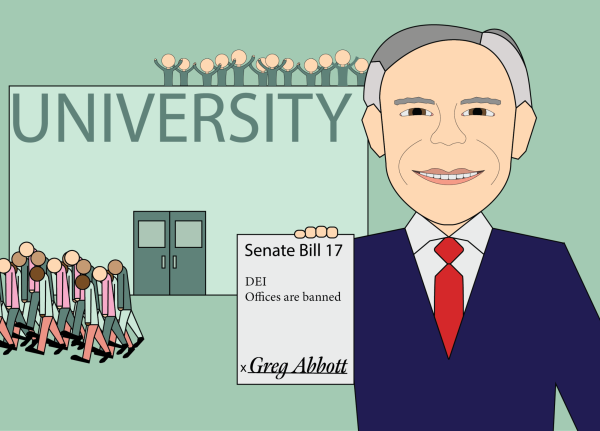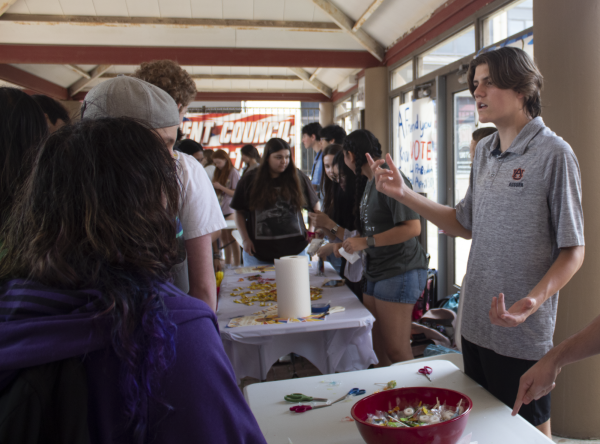Counseling helps struggling students
LENDING A HELPING HAND: Mental Health Professional Amanda Toohey works to help students in her office. Toohey refers students to different forms of mental health resources to assist in the mental health of students.
October 27, 2021
AISD wide use of Gramercy implemented to support student mental health & well-being
Rising stressors in a chaotic world lead to a substantial increase in student mental health issues forcing schools to find new programs. With this schools are finding ways to better help students in their time of need, creating opportunities for different means of school counseling.
All throughout AISD schools have implemented external counseling programs with the use of a company called Gramercy. The use of Gramercy can be entirely confidential, with parental consent, and gives students the ability to schedule counseling without having to speak to a administrator; all a student needs to do is fill out an online form that can be found on the JBHS website.
“I think it can be nice to also talk to somebody who isn’t part of the school system, it can feel a little safer,” AISD’s Mental Health Center organizer, Ellie Gamble said. “In a way to be able to express frustrations and stuff like that so I do think it’s helpful.”
Since the implementation of Gramercy, data from 2018-2019 students have shown significant improvements with depression, anger control problems, hyperactivity attention problems, functional impairment, and over internalizing problems. Students have also demonstrated improvements in attendance, achievement, and behavior at school.
It’s kind of this collective impact, and we’re all managing it and dealing with it differently
— Amanda Toohey, Licensed Mental Health Professional
“I think this means that these Gramercy counselors know what they’re doing,” junior Jalen Mink said. “As scared as students may be of getting help, knowing that could make it easier.”
Gramercy counseling services are offered in a central location, the library. The library provides a comfortable, sustainable environment, making it easier to schedule appointments around a student’s class schedule which can avoid having to leave campus.
“I think having those services accessible is really important,” Toohey said. “The district saw the rising need for the service, and they wanted to reduce barriers to access. The benefit of having the services offered on campus is that kids can access it while they’re at school.”
Gramercy is used to provide accessible counseling for any student who needs it. According to AISD literature, financial assistance may be available to individuals that are uninsured or under-insured to ensure that no student is excluded.
“It’s smart that Bowie is providing mental healthcare outside of standard school counselors,” junior Shane Hartle said. “Unfortunately it seems like no one takes school counselors seriously”
[COVID had] really affected the emotional well-being of our population at large, but students in particular
— Ellie Gamble, Mental Health Center Organizer
The hardships and stressors of the COVID year heavily affect everyone’s well-being. Counseling and getting help has never been more important. According to CDC, as of late June 2020, anxiety/depressive-related symptoms rose 31 percent, stress-related symptoms increased 26 percent, and serious suicidal considerations increased 11 percent with no signs of these rates declining.
“Extra counseling is a very good thing especially after quarantine being very destructive to a lot of students’ mental health,” Hartle said. “There should definitely be an emphasis on mental health now more than ever.”
Because a large portion of students haven’t been to school for a year, the transition can be troublesome, according to National Association of Student Personnel Administrators (NASPA). Students struggling with thins such as adjusting to a new academic year or forming relationships with others.
“[Returning to school] is really like a new normal, it looks different than before. It’s kind of this collective impact, and we’re all managing it and dealing with it differently,” Toohey said. “I think that is a normal response to having to cope with things that we’re going through.”
Students with mental health problems have been reported to struggle with their energy level, concentration, academic performance, etc. According to Suicide Prevention Resource Center, a study conducted in 2015 has recorded stress to negatively impact 30 percent of students, anxiety with 22 percent, and depression at 14 percent of students with 37 percent of students aged 14 or older with a mental health issue drop out of school, according to Accredited Schools Online.
“Allowing students to vent and get bad feelings off their chests helps,” Mink said. “Just being able to talk to some can improve the quality of life, which even improves the academic aspect of life.
However the importance of counseling isn’t just about academic success, with the third leading cause of death for people aged 10-24 being suicide, 90 percent of these individuals having underlying mental illnesses as well as 70 percent of them in juvenile detention centers having some form of mental illness.
“Counseling can help people get out of that mindset and is more effective than any other method we have,” Hartle said. “Kids in juvie should have counseling every day, and something like [Gramercy] would be able to help them.”
The Anxiety and Depression Association of America found that 80 percent of kids with a form of diagnosable anxiety and 60 percent of kids with a form of diagnosable depression are receiving the available treatment that is necessary to help them.
“[The recent years have] really affected the emotional well-being of our population at large, but students in particular. I’m happy for all the campuses that have someplace for students to go,” Gamble said. “We’ve seen a lot of people reaching out and expressing concern and trying to transition back.”


